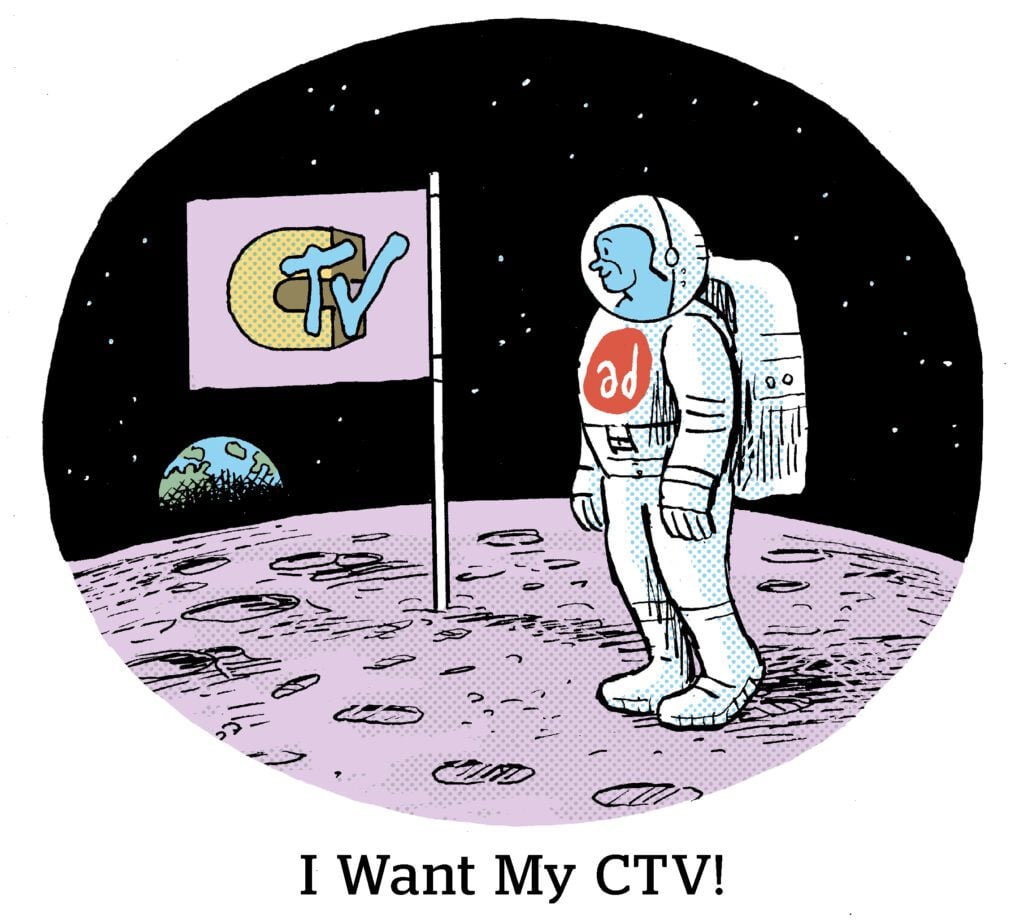It’s counterintuitive, perhaps, but the majority of social media advertising demand comes from small businesses. And TV ad tech companies are trying to make it easier for small businesses to apply tools like data matching that are table stakes on social platforms.
Late last year, TV identity resolution company Blockgraph announced the launch of its data onboarding platform for small and local businesses. Called OnDemand, the platform allows advertisers to take their first-party data and match it to data offered by media publishers and ad tech platforms.
Now Blockgraph is adding two more features for the OnDemand product, which the company announced on Wednesday.
One new feature, called Geo-Based Audiences, essentially does what it says on the tin: Advertisers can reach households in a certain market without using IP signals or a CRM list, so they can show ads to hyper-specific geographic locations in a way that’s still considered privacy-safe.
Blockgraph is also adding campaign reporting tools for both advertisers and specific media sellers that operate on the platform. This product is dubbed Collaborative Insights. And, notably, Blockgraph is a joint venture co-owned by Comcast, Paramount and Charter Communications. So there are major media sellers with first-party data on the platform.
These new features, not to mention OnDemand’s core purpose, reflect a growing trend within the advanced TV measurement industry to make enterprise-level targeting tools more accessible to small business owners.
“It proves the thesis that local advertisers are just as data-driven as some of the big national companies, if not more in some cases,” Manningham said.
Clean rooms for small businesses
Although Blockgraph positions OnDemand as a self-serve product, Manningham took care to clarify that it’s not an ad-buying platform.
Instead, Manningham prefers to think of OnDemand as a “matching and onboarding collaboration tool.” The self-service element manifests in how advertisers are able to upload their data to the platform themselves.
It’s similar to how clean rooms operate, he said, except that most clean room products are built for enterprise-level organizations. A small or local business doesn’t have data scientists, let alone engineers, so it can be difficult to navigate the clean room and data collaboration tech market.
Comcast Advertising, for example, works with thousands of small and local businesses as part of its own Universal Ads platform, which launched in January this year and which does allow for self-serve ad buying.
By comparison, Comcast works directly with only a few thousand total advertisers.
As an early adopter of OnDemand (as well as a co-owner via Comcast), Comcast uses the matched data to find addressable households within its own TV ad inventory and can layer on ZIP code-level data as a result of the Geo-Based Audience feature.
Once the marketing campaign is over, Comcast loads the campaign impression and sales data back into OnDemand. Both parties then generate their own ROAS reports.
A major furniture retail company tracked a 13x increase in ROI as part of a recent partnership that used a first-party data match, said Comcast Advertising Chief Revenue Officer Dawn Lee Williamson.
“It’s making our media much more relevant,” she added. Comcast can now more effectively pitch itself to advertisers and agencies as a full-funnel solution rather than simply a branding vehicle.
Less manual, more local
What these two recently launched features bring to OnDemand – namely, better reporting tools and location-based identification – isn’t new to the CTV ad-buying ecosystem. But historically they’re more difficult to implement, particularly for smaller businesses.
Without mapping to IP addresses, which can be difficult even for enterprise-level CTV advertisers given evolving privacy restrictions, targeting households based on ZIP codes would “require more manual operation and campaign planning, with even more humans in the loop,” Manningham said.
Instead, when first-party location data is uploaded to Blockgraph’s system, each household is given an anonymous code that can be matched to TV broadcasters on the platform. This allows advertisers to target individual neighborhoods – which can be essential for locally based businesses that are trying to reach residents near a particular storefront – without the broadcaster or advertiser directly sharing any home addresses or other personal information.
Similarly, sales data attribution can end up being labor intensive and speculative for a company that doesn’t have the right tools and its own strong data set for confirming audiences. The process is “almost like trial and error,” said Williamson.
Simplifying these functions could help add thousands or even tens of thousands of local advertisers to the TV and streaming media sellers. Which might sound crazy, but Google or Meta boast of SMB accounts in the millions.
Which makes major TV studios adding only thousands seem pretty reasonable. And they have to start somewhere.
















